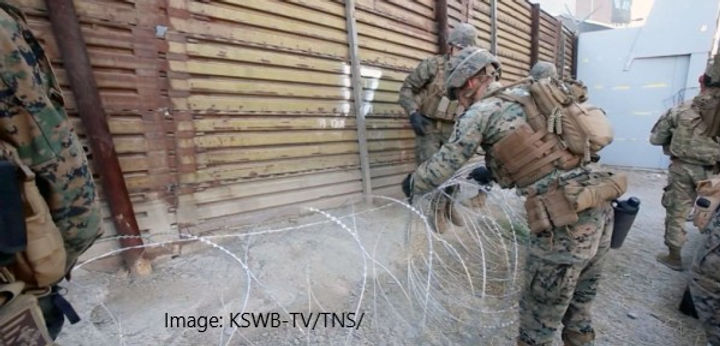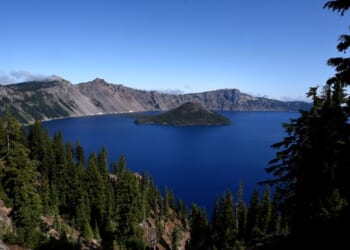
Back during the 2024 presidential campaign then-candidate Donald Trump devoted time during several campaign speeches to articulating the need to use the military to secure the southern border, and on Friday President Trump fulfilled that promise.
Naturally, the idea of militarizing the southern border has driven open borders Democrats and a few cheap labor alleged Republicans nuts, prompting them to spout all kinds of nonsense about the Posse Comitatus Act and claims of incipient Fascism.
Their ahistorical arguments against President Trump’s border policy doesn’t stand up to the most cursory review of the facts of American history or the plain language of Article II of the Constitution.
Up through World War II and into the Cold War America had substantial military assets deployed at or near the border. Just look at the names of border cities and towns: Fort Bliss and Fort Sam Houston in Texas are still active-duty military posts. Camp Shannon in New Mexico was built by the U.S. Army for border patrols it was operational from 1917 – 1922 at Hachita, New Mexico, and became a subpost of Camp Furlong in 1920. Camp Furlong was built by the U.S. Army to patrol the Mexican border. Known as Post at Columbus it was attacked by Pancho Villa’s forces in March 1916.
Camp Cochise, Camp Don Luis, Camp San Bernardino Ranch, Camp Douglas, Camp Bisbee and others in Arizona were all built by the U.S. Army as border patrol posts and were operational through World War I and the upheaval of the Mexican Revolution. Camp Newell was a temporary border patrol station built during the 1911 Mexican Crisis that became a permanent U.S. Army border post, and Fort Huachuca, Arizona is still an active-duty military post and home to the Army Intelligence Center and School.
Indeed, from the Coastal Artillery at Fort Baldwin at Sabino Head on Maine’s Kennebec River to dusty posts in the Texas, New Mexico, Arizona and California Southwest, the American border and shoreline are dotted with place names confirming that defending the border at the border was the job of the Army.
The point of this history lesson is that for the vast majority of our country’s history the military didn’t do its work overseas – its number one job was to defend the United States and its borders. It is a fantasy of the Cold War era that all the threats to our national sovereignty can be stopped by strategic bombers and nuclear missiles, as opposed to soldiers on patrol at our borders.
And today, the threats are much more dangerous than those presented by the political unrest of the early 20th century Mexican Civil War.
Today, Communist China is conducting a campaign of chemical warfare against the civilian population of America accounting for a quarter-million fentanyl fatalities during the Biden years. Perhaps even more threatening is the sophisticated system to deliver fit, military-age Chinese males to our border via Mexico and Central America. Thousands of these invaders illegally crossed our border and were allowed unvetted entry into our country during the Biden years. This invasion was only possible through an alliance of Mexican terrorist cartels and unknown authorities in Communist China.
We applaud President Trump’s initiative in deploying the military to our southern border and look forward to the next phase of the President’s plan, which we hope will include rules of engagement with the necessary flexibility to repel or neutralize the threat.
George Rasley is editor of Richard Viguerie’s ConservativeHQ.com and is a veteran of over 300 political campaigns. A member of American MENSA, he served on the staff of Vice President Dan Quayle, as Director of Policy and Communication for former Congressman Adam Putnam (FL-12) then Vice Chairman of the Oversight and Government Reform Committee’s Subcommittee on National Security and Foreign Affairs, and as spokesman for retired Rep. Mac Thornberry, a member of the House Permanent Select Committee on Intelligence and former Chairman of the House Armed Services Committee.








